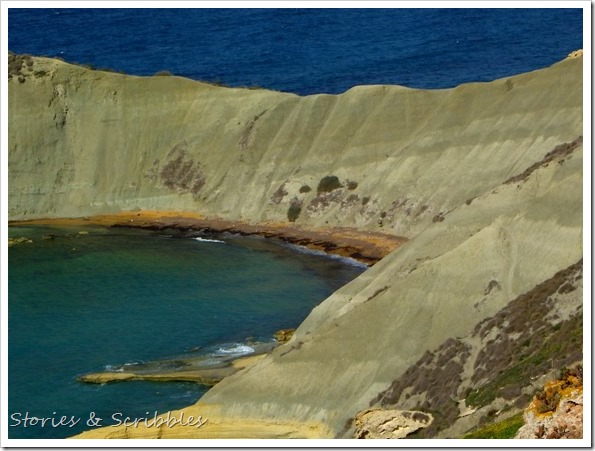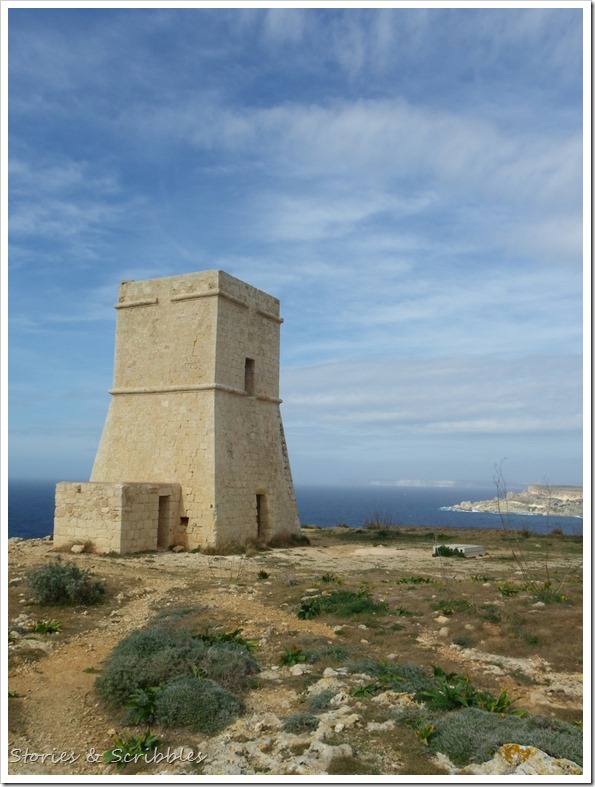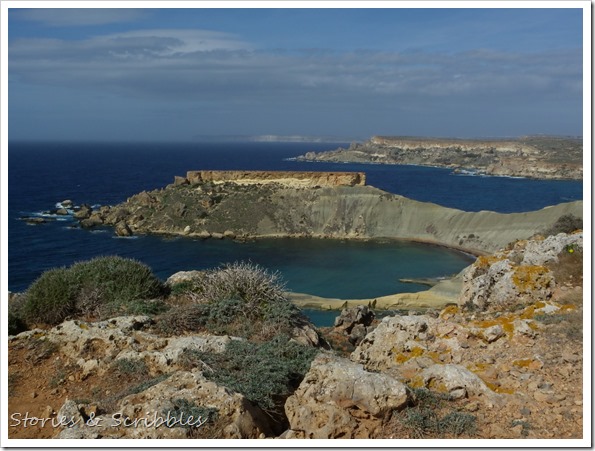Gnejna Bay is one of our favourite places to go for a swim in summer and to hike during the cooler months. Up on the ridge overlooking this sandy bay is Ta' Lippija Tower. Ta' Lippija Tower is the first of several towers built by Grand Master Lascaris in the 17th century to serve as watch-towers in the less-protected areas of the island. On a sunny but breezy day in February we decided to take the short hike from the bay to the tower. It's an uphill climb but it's worth the extra effort and what's even better is that we were by ourselves, except for a very few like-minded individuals. So it was a peaceful walk and the only sound that broke the silence was bird-song - not a bad accompaniment at all.
It's during walks like these that we get to make small discoveries: like tiny wild-flowers and lichen-covered rocks. Such little things, so easy to miss - fleeting beauty, here today and gone tomorrow. There's no other way to make them last except by pointing a camera lens at them and capturing their images forever.
It takes about an hour to walk from street-level up to the tower at a leisurely pace. It took us a bit longer since we were so preoccupied with taking photos. The path slopes gently, except for the last few metres which are a bit more taxing - but nothing that an able-bodied person cannot master. In this area of Malta the geological layer known as blue clay is quite predominant. Blue clay erodes easily when wet and this accounts for the almost extra-terrestrial landscape of some parts of Gnejna Bay. In reality, it's nothing overly spectacular, but it does create some striking photo opportunities. The contrast of blue clay deposits against the golden limestone is especially prominent when viewed from above; and once you crest the ridge and stand beneath the tower, you are rewarded with a view that is quite unique, especially since the blue clay deposits on the island are quite rare.
By it's very nature blue clay is not very fertile and in most cases it is totally devoid of any vegetation but in other areas, hardy grasses such as Esparto grass, and flowering species such as Asphodel and Seaside Squill do manage to thrive. It has become something of a hobby of mine to photograph wild flowering plants and then try to find out a little bit about them. All this has made me realise, that in spite of its small size, Malta is home to an amazing array of wild-flowers that are stunningly beautiful.
Like all the coastal towers, Ta' Lippija tower commands a view that stretches for miles, which, of course, is the reason why it was built. This tower, which is about 11 metres high, has a square plan and two floors topped by a flat roof. Each floor has a single room and the upper floor was accessed by a wooden, or rope, ladder. Originally the tower was known as Torre del Migiarro. I've made the trek up to the tower another time, back in 1995, when my friends and I decided it would be the perfect way to spend a lazy Sunday afternoon. At that time we found the tower in an advanced state of disrepair: part of the roof had caved in and the whole edifice showed signs of structural damage. In 2003, Ta' Lippija Tower was repaired and restored and now looks much the same as it did when it was constructed in 1637.
This walk combined three of my favourite things: nature, the sea and a little bit of history. It is the first installment in the "Off the Beaten Trail" series that I hope you will enjoy. As promised earlier this year, I would like to share more of this little island with you without throwing out too many facts and making it sound like some sort of lesson. I hope that, in some small measure, I have succeeded.
Location: Gnejna Bay and Lippija Tower, February 2016
A small note on the pronunciation of Maltese words (which can be a bit tricky). Gnejna sounds like Jineynah and Lippija like Lippiyah).
Related links:















